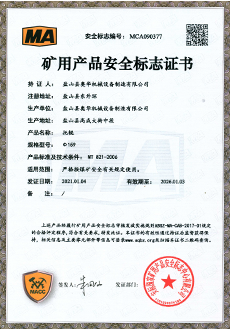 Afrikaans
Afrikaans  Albanian
Albanian  Amharic
Amharic  Arabic
Arabic  Armenian
Armenian  Azerbaijani
Azerbaijani  Basque
Basque  Belarusian
Belarusian  Bengali
Bengali  Bosnian
Bosnian  Bulgarian
Bulgarian  Catalan
Catalan  Cebuano
Cebuano  Corsican
Corsican  Croatian
Croatian  Czech
Czech  Danish
Danish  Dutch
Dutch  English
English  Esperanto
Esperanto  Estonian
Estonian  Finnish
Finnish  French
French  Frisian
Frisian  Galician
Galician  Georgian
Georgian  German
German  Greek
Greek  Gujarati
Gujarati  Haitian Creole
Haitian Creole  hausa
hausa  hawaiian
hawaiian  Hebrew
Hebrew  Hindi
Hindi  Miao
Miao  Hungarian
Hungarian  Icelandic
Icelandic  igbo
igbo  Indonesian
Indonesian  irish
irish  Italian
Italian  Japanese
Japanese  Javanese
Javanese  Kannada
Kannada  kazakh
kazakh  Khmer
Khmer  Rwandese
Rwandese  Korean
Korean  Kurdish
Kurdish  Kyrgyz
Kyrgyz  Lao
Lao  Latin
Latin  Latvian
Latvian  Lithuanian
Lithuanian  Luxembourgish
Luxembourgish  Macedonian
Macedonian  Malgashi
Malgashi  Malay
Malay  Malayalam
Malayalam  Maltese
Maltese  Maori
Maori  Marathi
Marathi  Mongolian
Mongolian  Myanmar
Myanmar  Nepali
Nepali  Norwegian
Norwegian  Norwegian
Norwegian  Occitan
Occitan  Pashto
Pashto  Persian
Persian  Polish
Polish  Portuguese
Portuguese  Punjabi
Punjabi  Romanian
Romanian  Russian
Russian  Samoan
Samoan  Scottish Gaelic
Scottish Gaelic  Serbian
Serbian  Sesotho
Sesotho  Shona
Shona  Sindhi
Sindhi  Sinhala
Sinhala  Slovak
Slovak  Slovenian
Slovenian  Somali
Somali  Spanish
Spanish  Sundanese
Sundanese  Swahili
Swahili  Swedish
Swedish  Tagalog
Tagalog  Tajik
Tajik  Tamil
Tamil  Tatar
Tatar  Telugu
Telugu  Thai
Thai  Turkish
Turkish  Turkmen
Turkmen  Ukrainian
Ukrainian  Urdu
Urdu  Uighur
Uighur  Uzbek
Uzbek  Vietnamese
Vietnamese  Welsh
Welsh  Bantu
Bantu  Yiddish
Yiddish  Yoruba
Yoruba  Zulu
Zulu belt drive idler pulley
Understanding Belt Drive Idler Pulleys
Belt drives are a common mechanical system used in various applications, from simple machinery to complex automotive systems. One essential component in many belt drive systems is the idler pulley. This article will explore the role of idler pulleys, their benefits, and considerations for their use in belt drives.
What Is an Idler Pulley?
An idler pulley is a wheel or roller used in a belt drive system to guide, tension, or change the direction of a belt. Unlike drive pulleys that are connected to a power source or load, idler pulleys do not transmit power directly; instead, they support the belt and ensure optimal performance. By maintaining proper belt tension, idler pulleys help prevent slippage, which can lead to inefficiencies and premature wear on both the belt and other components in the system.
Functions of Idler Pulleys
1. Tension Maintenance One of the primary functions of an idler pulley is to maintain appropriate tension in the belt. Proper tension is crucial in preventing the belt from slipping off the pulleys, leading to potential system failures. Adequate tension also ensures that the transfer of power between components remains efficient.
2. Belt Alignment Idler pulleys help maintain correct belt alignment throughout the system. Misalignment can cause uneven wear on the belt and can result in noise, vibration, and eventual belt failure. By guiding the belt, idler pulleys aid in aligning it with the other pulleys in the system.
3. Belt Routing In many applications, particularly where space is limited, idler pulleys enable more flexible routing of the belt. They allow designers to optimize the layout of a belt drive system, making it more compact without sacrificing performance.
4. Reducing Vibration and Noise Idler pulleys can also dampen vibration and noise within the system. By providing additional support for the belt, they can minimize the impact of any resonant frequencies and contribute to a quieter operation.
Benefits of Using Idler Pulleys
belt drive idler pulley

The inclusion of idler pulleys in a belt drive system comes with several advantages
- Extended Belt Life By ensuring proper tension and alignment, idler pulleys can help extend the life of the belt. This can lead to reduced maintenance costs and fewer replacements over time. - Improved Efficiency An optimally tensioned and aligned belt operates more efficiently, which can enhance the overall performance of the machinery or system.
- Greater Design Flexibility The ability to route belts effectively allows for more versatile design options, enabling engineers to create more compact and efficient systems.
Considerations for Use
When integrating idler pulleys into a belt drive system, several factors should be considered
- Material Selection Idler pulleys can be made from various materials, including steel, aluminum, and plastic. The choice of material will depend on the application's requirements, including load, speed, and environment.
- Placement and Positioning Proper placement of idler pulleys is crucial for effective belt tensioning and alignment. Designers must carefully consider the positioning to minimize the risk of interference and ensure optimal performance.
- Regular Maintenance While idler pulleys can significantly enhance the lifespan of a belt drive system, they themselves require maintenance. Regular inspections can help detect wear and prevent unexpected failures.
In conclusion, idler pulleys play a vital role in belt drive systems. By maintaining tension, ensuring alignment, and offering design flexibility, they contribute to the overall efficiency and reliability of various mechanical systems. Understanding their importance can aid in designing better systems, ultimately leading to enhanced performance and longevity.
-
Revolutionizing Conveyor Reliability with Advanced Rubber Lagging PulleysNewsJul.22,2025
-
Powering Precision and Durability with Expert Manufacturers of Conveyor ComponentsNewsJul.22,2025
-
Optimizing Conveyor Systems with Advanced Conveyor AccessoriesNewsJul.22,2025
-
Maximize Conveyor Efficiency with Quality Conveyor Idler PulleysNewsJul.22,2025
-
Future-Proof Your Conveyor System with High-Performance Polyurethane RollerNewsJul.22,2025
-
Driving Efficiency Forward with Quality Idlers and RollersNewsJul.22,2025





























